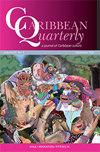Tracing Errantry
Q3 Arts and Humanities
引用次数: 0
Abstract
CHILD SEXUAL ABUSE / CHILDHOOD SEXUAL VIOLENCE / childhood sexual assault. The lexicon labelling the sexual trauma placed upon children’s bodies and minds changes, unlike that of the current power struggles behind such trauma. Patriarchal and antiquated views of female bodies and female agency, allowing sexual abuse and the often-resulting victimisation to continue, must be challenged at all levels of society, individually, institutionally, and politically. I begin such a task by focusing on literature – specifically contemporary, newly emerging canonical literature for young adults that writes openly about the occurrence of child sexual abuse and the emotional and psychological damage caused by such abuse. Teenagers and young adults often encounter canonical literature through educational texts. Scholars’ examination of such texts can lead to interpersonal challenges to power systems. The Jamaican-Canadian author Nalo Hopkinson’s novel Midnight Robber (2000)1 prominently positions the conversation about the prevalence of child sexual abuse occurring in society, along with the way in which society often responds, and then provides another model of addressing child sexual abuse to support the transformation of victims into survivors. Midnight Robber, Hopkinson’s second novel, emphasises the Afro-Caribbean protagonist’s body movements through various spaces. Many scholars have discussed how Hopkinson depicts technology, globalisation, modernity, high/ low cyberpunk, and postcolonial cybernetics in her work of speculative fiction.2 A few scholars have combined race and bodies, such as Elizabeth Boyle3 and Erin M. Fehskens,4 or spatial issues of migration, slavery, and dystopian spaces, such as Giselle L. Anatol5 and Myriam Moïse.6 Very few scholars have made child sexual abuse their primary focus, although it occurs towards the middle of the novel, propelling the rest of the narrative. Regarding assault, Shelby Crosby discusses the re-victimisation of the protagonist, Tan-Tan Habib, through the disregard of communities, which mirrors the re-victimisation that occurred during slavery and colonialism.7 However, while Crosby focuses on the disruption跟踪骑士精神
儿童性虐待/儿童性暴力/儿童性侵犯。与当前这种创伤背后的权力斗争不同,给儿童身心带来的性创伤贴上标签的词汇发生了变化。对女性身体和女性机构的父权和陈旧观点,允许性虐待和经常导致的受害继续存在,必须在社会的各个层面,从个人、制度和政治上受到挑战。我从关注文学开始这项任务,特别是面向年轻人的当代新兴规范文学,公开写下儿童性虐待的发生以及这种虐待造成的情感和心理伤害。青少年和年轻人经常通过教育文本接触经典文学。学者们对这类文本的研究可能会给权力体系带来人际挑战。牙买加裔加拿大作家Nalo Hopkinson的小说《午夜强盗》(2000)1突出地阐述了社会中儿童性虐待的普遍性,以及社会通常的反应方式,然后提供了另一种解决儿童性虐待问题的模式,以支持受害者转变为幸存者。霍普金森的第二部小说《午夜强盗》强调了非裔加勒比人主人公在各种空间中的身体运动。许多学者讨论了霍普金森在她的推理小说作品中如何描绘技术、全球化、现代性、高/低赛博朋克和后殖民控制论。2一些学者将种族和身体结合在一起,如伊丽莎白·博伊勒3和埃林·M·费斯肯斯4,或移民、奴隶制和反乌托邦空间的空间问题,如吉赛尔·L。Anatol5和Myriam Moïse。6很少有学者将儿童性虐待作为他们的主要关注点,尽管它发生在小说的中间,推动了叙事的其余部分。关于袭击,Shelby Crosby讨论了主人公Tan Tan Habib通过无视社区而再次受害的问题,这反映了奴隶制和殖民主义时期发生的再次受害。7然而,Crosby关注的是破坏
本文章由计算机程序翻译,如有差异,请以英文原文为准。
求助全文
约1分钟内获得全文
求助全文

 求助内容:
求助内容: 应助结果提醒方式:
应助结果提醒方式:


